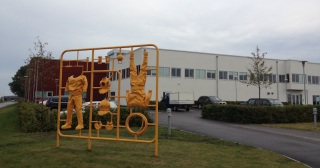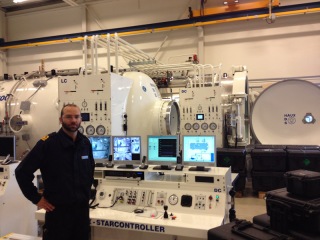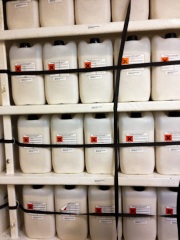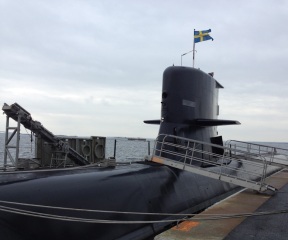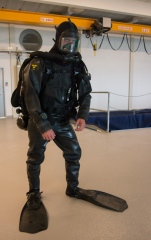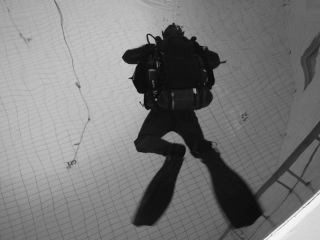When traveling around and trying to learn more about diving and techniques used it is important to sometimes take a step of your normal route and do something different. This week I´ve visited the Swedish Armed Forces Diving and Naval Medicine Centre (DNC) too look at diving from a military point of view. In a newly built complex all things needed for training, testing and research has been fitted and you can see that a lot of thought and effort has gone into the building. I divided my time here between the R&D section and the diveschool to get an overview of the operations.
The R&D section does a lot of different things but one part is testing and evaluating equipment for the military divers. For this they have an ANSTI machine, pool with flowing water, indoor and outdoor pools, easy access to the sea and a team of engineers. The army needs equipment that is robust and can be taken into the field during all sorts of conditions and they wont ever take the manufacturers word for true until they’ve tried everything themselves. With a fully equipped test facility they can do all this and more. But the fancy equipment doesn’t end there, they are just about to hook up a brand new hyperbaric chamber system with a wet section making it possible to conduct test dives in a controlled environment to pressures equivalent of 160 meters without leaving the lab. Here they will among other things test new tables for trimix use.
Being at a Navy base I got to look around on some of the really interesting diving ships. And is there any better than an actual submarine? Staying under water for weeks in the cramped compartments with absolutely no personal space must be mentally challenging and I don’t think I could do it but it sure was interesting having a look around seeing what the life onboard may be like. Remember how I told you about how Molecular Products make CO2 scrubber material for submarines as well. Finally I found the filters and all the scrubber material keeping the crew alive.
If you have a lot of submarines you also need to have a plan for what to do if the crew needs rescuing. For this the navy has a refitted diving support vessel that carries a rescue pod capable of docking to a submarine in need and evacuate the whole crew. They can then be lifted under pressure up to the hyperbaric chambers onboard capable of bringing them safely back to normal pressure.
The military divers are trained to take care of various types of underwater work and I could see a parallel to the commercial diving training I did earlier this summer. One morning I followed the training in emergency ascents for the new divers. On site there is a 18m deep pool for doing ascents both for divers and for submarine escape training. Even though the training is from 18 m they have successfully tested exiting a submarine at ten times the depth. The trainees did free ascents deeper and deeper, all the time with a ratio of one instructor per student. This training has some safety concerns with the potential for lung damage etc. With a doctor next to the pool and a prepared recompression chamber ten meters away its made as safe as possible. Personally I kept to observing, freediving up and down the tank and looking. From an instructors point of view I envy the facilities and resources the military have for their training. I also wouldn’t mind sometimes to be able to give orders to the students in the same manner and have them followed… If any of my previous students read this, I don’t mean you.
That the Armed Forces invest a lot in their diving right now could also be seen in the massive amounts of new dive equipment soon to be brought into use. I had the privilege of testing the new rebreather to be used for the clearance divers, ISMIX. This is a semiclosed, fully mechanical and nonmagnetic rebreather making it possible to sneak up on even the meanest of mines. Having dived both open and closed circuit before the semiclosed was a new experience again. Having some characteristics from both worlds it took some time before I could comfortably keep the buoyancy and shift depths in a controlled manner. I guess it just takes a while to rewire the brain to the specific style. As I gently tried to sneak up on imaginary mines I had to admit to myself it would take a lot more skill and an inner calm to do it in a sharp situation. All in all the visit was valuable and a glimpse in to a whole different part of the diving world.
Now I spend a few days in Sweden preparing for the next adventure but knowing myself I´ll probably go diving with some friends.
